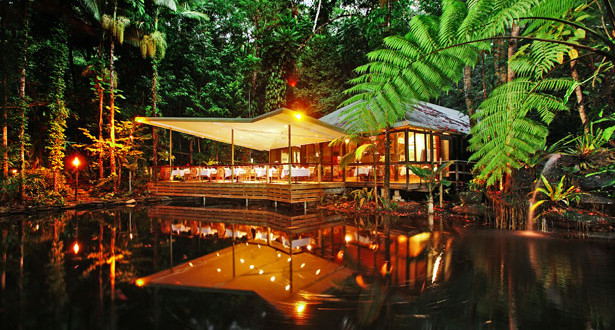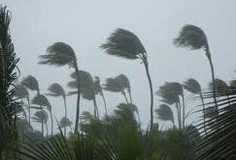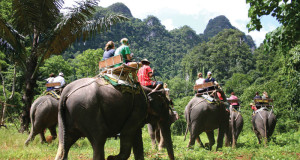
Things to consider when buying a first aid kit for an outdoor activity such as camping – and there are so many. Our experience tells us the first thing to consider is the activity you intend on doing and the climate you intend on doing it in. For example, a first aid kit consisting of animal plasters and a lollipop for the children for use in your back garden won’t cut it on an ice climbing trip to Scandinavia.
Another important consideration is your ability – if you were to open your first aid kit, would you know how to use each item contained inside? Is it time to maybe enrol on a basic first aid course? Even the most complete first aid kit is rendered useless if the knowledge required to give basic first aid is lacking.
For this guide, we’ll assume we will be participating on a low risk camping activity.
Our definition of a low risk camping activity:
- Falls from height will be unlikely.
- Risk from submersion in dangerous waters (cold, deep, fast flowing etc) will be minimal.
- Medical attention is available within the hour.
- Shelter, food and water are no further than 4 miles or one hour walk away.
Always make sure you are competent to carry out any activity you plan to engage in. Use your judgement to determine the risk factor of your activity. Always take into account any factors beyond your control – a sudden fall in temperature or visibility can render any activity dangerous.
Moving on to the first aid kit, the first thing to be included in any kit is personal medication – that is any medication that has been prescribed to you that you would require on a day to day basis.
The rest of your kit should consist of at least:
- Waterproof First Aid Kit Bag
- Flashlight
- Whistle
- Scissors
- First Aid Tape
- Antiseptic Cream
- Anaesthetic Spray
- Variety of Gauzes
- Eye Wash
- Burn Relief Ointment
- Variety of Bandages
- Plasters / Band-Aids
- Some form a pain relief – Aspirin / Paracetamol / Ibuprofen
- Latex Gloves
- An EpiPen or similar
You should consider including the following items if not already included in your survival kit:
- Tweezers
- A Fire steel or similar
- Water Purifying Tablets
- Space Blanket
Finally, the following we consider optional but make great additions when pack weight isn’t an issue:
- Hydrocortisone Cream
- Insect Repellent
- Antihistamines
- Antacids
Read on below for a description of each item and its suggested use.
Waterproof First Aid Kit Bag
There is absolutely no reason not to have a waterproof first aid kit bag to hold your first aid kit contents. The items in your first aid kit should be kept clean and dry at all times – a damp first aid kit is almost like no first aid kit.
Flashlight / Torch
Chances are you’ll be carrying a flashlight anyway, but should always carry one in your first aid kit. This should be pretty self explanatory; first aid is a lot harder in the dark. Besides this, a torch is a great morale booster when an injured member of your party is immobile in the dark.
Whistle
Don’t carry just one whistle – carry one for each member of your group in case you need to separate or are separated for any reason. It is not only required to signal for help but is just as important to signal to each other.
Scissors
These have a variety of uses in many first aid scenarios from trimming bandages and gauze to removing clothing in an emergency. Try not to use these for general tasks and try to keep sterile where ever possible.
First Aid Tape
First aid tape has an unlimited number of uses, from a makeshift splint to taping on gauze. A roll should be found in every emergency first aid kit.
Antiseptic Cream
A minor cut or graze wouldn’t normally cause a problem – until it gets infected and can ultimately lead to very serious complications. Application of an antiseptic cream to keep this from happening could be very important.
Anaesthetic Spray
This may bring some welcome relief to common mishaps such as burns, stings, bites, cuts and grazes. Be sure to read the accompanying leaflet for details on the use of the spray – different sprays can be used on different ailments.
Variety of Gauze
Knowing when to use a gauze is easy when you know its purpose – to help stop bleeding. A gauze is made from porous fibres designed to absorb and trap the blood and thus help it clot. Do some research on when to and when not to use a gauze.
Eye Wash
Deemed unnecessary by some , but we like to take an eye wash in our first aid kits so we know we have a convenient and sterile wash available should any of our party be involved in an eye related incident.
Burn Relief Ointment
It’s surprising just how common burns are encountered on camping trips, even to the most experienced of us. It can happen very easily but luckily can also be treated just as easily with the right gear.
Variety of Bandages
This includes a variety of sizes as well as shapes and types. Do your research on bandages – learn how and when to use them. Learn how to use one in a splint, how to make a sling, how to make a tourniquet etc. Knowing how to use each type will help you decide which type to stock your first aid kit up with.
Plasters / Band Aids
Use these to treat minor cuts and abrasions and help keep out infection. Remember to change the plasters regularly and to clean the wound before reapplying a new one.
Aspirin / Paracetamol / Ibuprofen
It could be very dangerous to give anyone painkillers such as Aspirin, Paracetamol and Ibuprofen. Always make sure the leaflet accompanying these drugs is kept in the first aid kit for reference. Always thoroughly read the leaflet and satisfy yourself it is safe to treat the patient with painkillers. If you are ever unsure, it is always safer not to do so.
Latex Gloves
These offer protection not just for the patient from infection but also for the giver of first aid. Always practise good hygiene procedures when treating a patient for both the health of the patient and yourself.
An EpiPen or Similar
An EpiPen must never be used without proper training or medical knowledge. Given the right circumstances and a competent first aider, an EpiPen can significantly increase the chances of survival of a patient in anaphylactic shock. Again thorough research is advised.
Tweezers
These are ideal for removing foreign bodies from cuts and abrasions. Bear in mind that multi tools such as a Swiss Army Knife or Leatherman usually have tweezers built in – along with a host of other useful items; if your pack weight permits it may be worthwhile investing in something similar.
A Fire Steel or Similar
Some people carry a lighter or matches, we prefer a fire steel as we know we can depend on it working when we need it. You need one of these in your pack whatever your activity – in fact, put one on your key chain. It can be used with any kind of tinder to make a fire, can be used wet and are virtually indestructible.
Water Purifying Tablets
Always keep water purifying tablets in your kit, whether you keep it in your survival kit or first aid kit. Even the most simple of incidents can become drastic and life threatening without water and for their size and weight there is no excuse to go anywhere without carrying some.
Space Blanket
This item is very useful for keeping a casualty warm by reflecting their own body heat. Space blankets are useful in a variety of scenarios.
Hydrocortisone Cream
Hydrocortisone cream can be used on insect stings, nettle stings and the like. Using a cream such as this can help stop simple things like insect stings and bites from ruining a camping weekend.
Insect Repellent
Never underestimate the importance of an insect repellent. Why suffer with all those midge bites when you can apply some insect repellent and forget all about them.
Antihistamines
Antihistamines are considered by many as optional unless of course you suffer badly from allergies. Again, these can help turn a miserable camping trip to a pleasant one with a tiny tablet.
Antacids
If you know you typically suffer from excess stomach acid, don’t forget to pack a packet of these.
As a final note, all of the above items are useless without a competent first aider. If you take part in any outdoor activity, give some serious consideration to taking part in a first aid course for not only your own benefit but others in your group.

Source by Sean Blaney
 Vitamin Agent The Health & Naturalistic Source
Vitamin Agent The Health & Naturalistic Source





